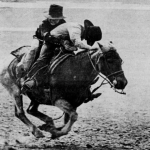Richards: Pricing your home correctly
Valley Voices

Courtesy photo
Attempting to sell your home can be frustrating. Why isn’t it selling? What actions can be taken for a successful outcome? Here’s what you need to know about pricing your home correctly.
During the fall of 2023, arguably outside of the buying season for real estate transactions, I sold a condominium for $4.28 million after two months of interest without a bona fide offer on the table. The home was originally listed at close to $5 million, and the seller believed the home was unique enough to fetch a premium.
A few months prior, a very similar condominium had sold for $4.25 million, and it wasn’t distinctly different from the property in question. After several weeks, the seller became frustrated and asked for a new strategy. I asked him, “How are you going to feel in a year from now if we don’t sell your home?” The seller replied, “Not great at all.” I followed up with, “How are you going to feel if we sell the home for fair market value today?” Almost relieved, he replied, “Much better than holding onto it.” We lowered the price to $4.4 million, and it was sold within three weeks.
There are four primary factors to consider when establishing the value of a home: condition, location, competition, and market conditions.
Condition
The condition of a home encompasses various factors, including the year built, construction quality, layout, and finishes. When comparing two properties within a neighborhood, all else being equal, the home that has been recently updated with time-appropriate finishes will sell faster, easier, and potentially fetch a premium over a home that hasn’t been remodeled. However, updates alone don’t always guarantee a higher sales price; it’s advisable to evaluate costs and the potential gain or loss in equity before undertaking a construction project.

Support Local Journalism
Location
The location differentiates price based on exclusivity, desirability, recreational access, and proximity to shops, restaurants, and other conveniences. For example, homes in Dotsero trade for less than properties in Vail Village.
Competition
Here’s a practical way to look at this from a buyer’s perspective. If a buyer has $1 million in purchasing power, where else could she buy in that range, and why would she decide to purchase in that specific area? Most importantly, with any amount of buying power in a specific neighborhood, what else is available for sale, and what makes the competition more or less attractive? Less inventory in a neighborhood often drives prices up.
Market conditions
This is the ultimate indicator of a home’s true market value. Understand this: there is more data than ever with modern technology, and the most appropriate determination of value is comparing the most recent sales in the neighborhood. A detailed comparative market analysis with adjustments made based on square footage, views, condition, location, taxes, dues, and other nuances provides accurate insight. How recently did the comparative home sell relative to the time of establishing your property’s worth? The condominium I sold for $4.28 million was almost an apples-to-apples comparison to the home that sold for $4.25 million, establishing a true indicator of the market conditions at the time.
Final thought of the day
Understand this hard reality: homes with higher relative values earn a longer grace period for days on the market. If an entry-level home doesn’t sell within 30 days, it’s simply overpriced. An exclusive luxury home on Forrest Road in Vail may sit for years before a successful sale. After all, how many buyers exist on the planet who can afford and desire a $40 million home in the heart of ski country?
Ryan Richards is the growth director and a luxury real estate agent at Keller Williams Mountain Properties. He is the founder and co-owner of the Bunkhouse, Vail’s first and only boutique hostel. You can find him at RyanRichards.com or 970-401-0720









